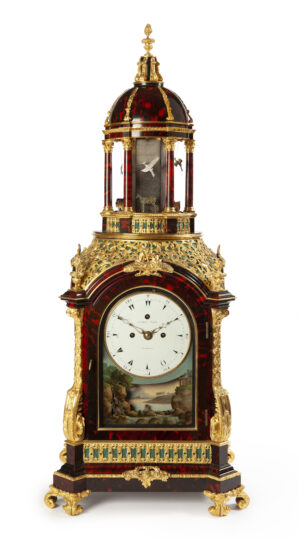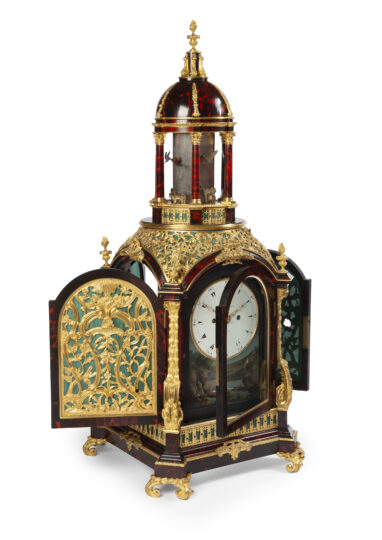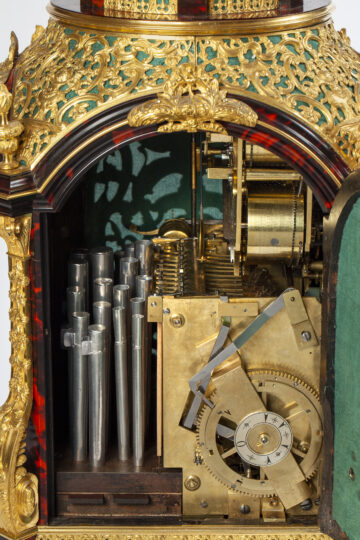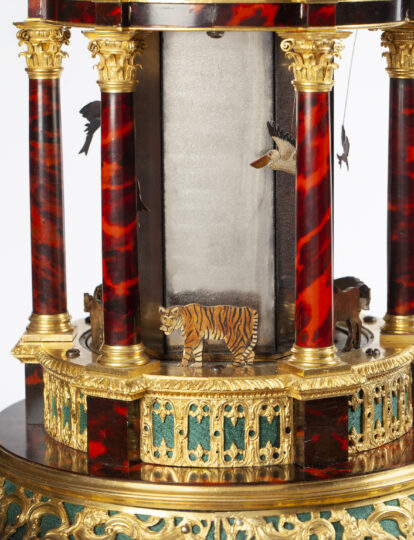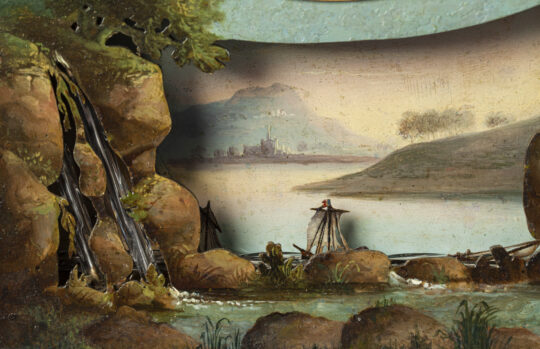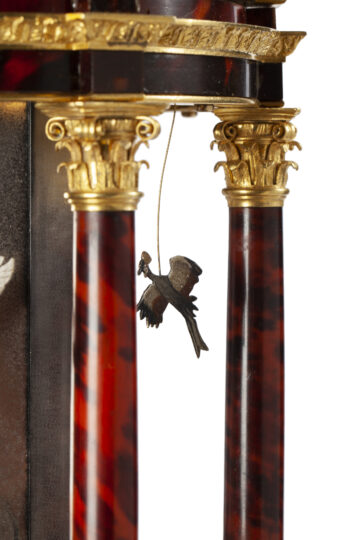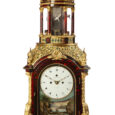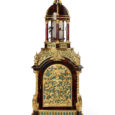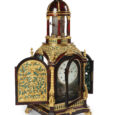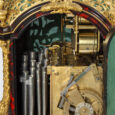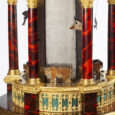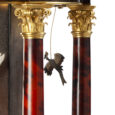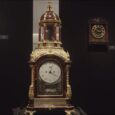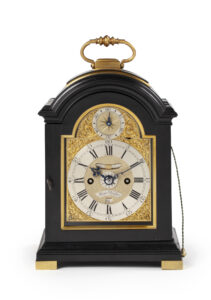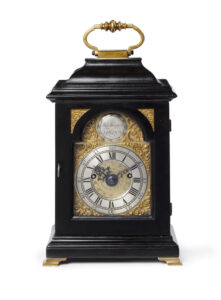RARE BRACKET MUSICAL, ORGAN AND AUTOMATA CLOCK George Prior, London Ca. 1785 England
M&R26
A BRACKET MUSICAL, ORGAN AND AUTOMATA CLOCK
Signed: George Prior, London
Circa 1785
England
Movement
The triple chain-fusee movement has going, striking and musical trains. The going train has a verge escapement, whilst the striking indicates the quarters on a nest of eight bells, on the hour followed by the number of hours on an additional bell. In addition, every three hours (3-6-9-12 o’clock) one of five tunes is played on the organ with 12 or 24 pipes, driven by a separate mechanism, wound from the side. The backplate is signed Geoe. Prior, London.
Dial
The arched dial plate has an enamel dial set in a gilt pearl-string bezel above a three-dimensional painted scene depicting a rocky gorge with a view on the sea and a town with mountains in the background. This scene is one of two automata, which, when activated every quarter hour by the striking train, makes the ship move, the waves rolling and the waterfalls run. The dial has Turkish hour numerals with Turkish five-minute and minute divisions. The time is indicated by a fine pair of pierced gilt-brass hands. It is signed by the maker above and below the middle amidst three winding holes in the following manner: GEORGE PRIOR LONDON.
Case
The impressive red tortoiseshell-veneered case is lavishly adorned with green silk-backed, richly pierced foliate and floral gilt mounts and sound frets, in which fruit motifs and C-volutes are integrated as well. It has additional gilt ornaments on the corners, is surmounted by four flambeau finials and rests on four substantial scroll feet. The whole is topped by a most attractive open-work pillar gallery with cupola in which the second automaton is situated, activated by the organ mechanism and displaying an array of animals and birds in the air turning around every three hours.
Duration: 1 week
Dimensions: 77 x 34 x 34 cm.
George Prior (1735-1814) was one of the most significant clockmakers exporting clocks and watches to Turkey in the second half of the 18th century. Trading took place through British merchants established in the Ottoman ports. British diplomats had begun presenting clocks as gifts to Ottoman officials in the late 17th century in order to open up the market for clocks, which had been dominated by the French and Swiss up till then. The eventual success of their efforts prompted a high demand for British clocks which led to the formation of lucrative export businesses like that of George Prior. Indeed, he was so well renowned that the Turkish word ‘pyrol’, a derivative of ‘Prior’, was coined to describe a British made clock.
Note
This clock is of historical importance as it reflects the level of trade between Britain and the Orient in the second half of the 18th century. Although largely dominated by textile, clocks played a most important role in giving presents at various levels. Complex and unique clocks of this type rarely come to the market as most of them are now in private collections and museums, such as the Victoria and Albert Museum, London and the Metropolitan Museum in New York.

